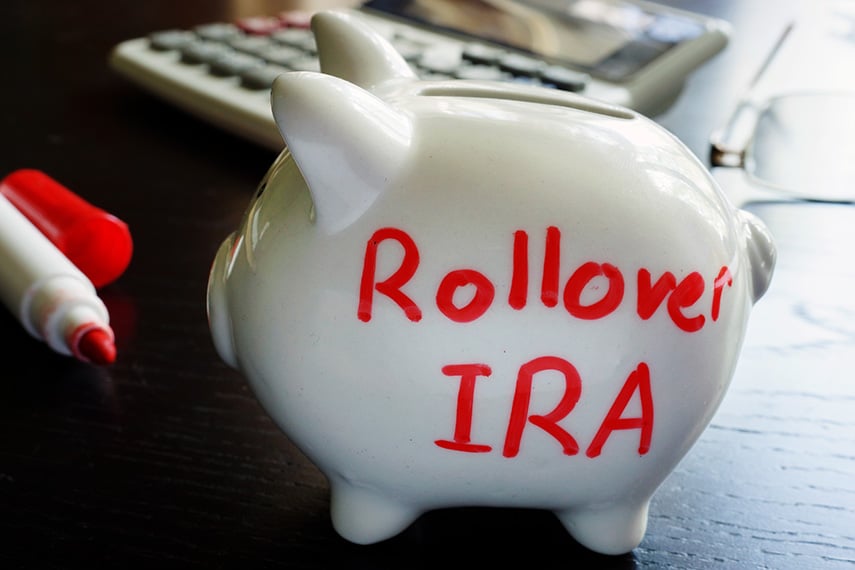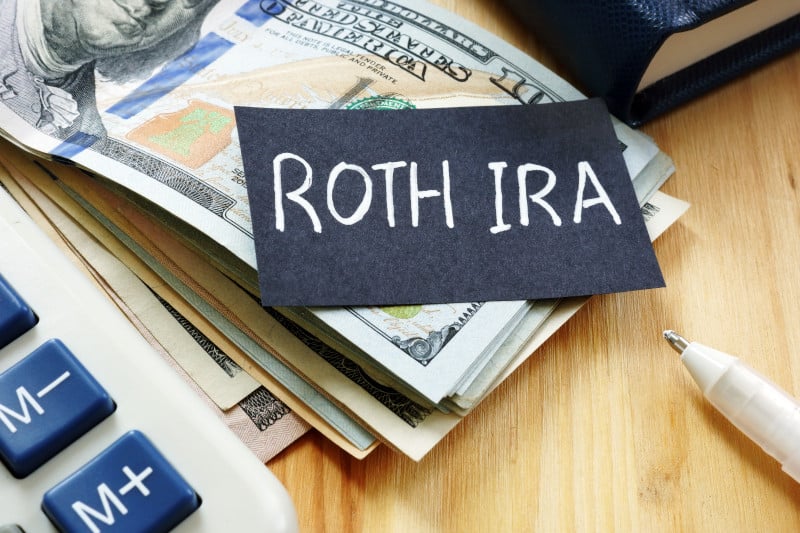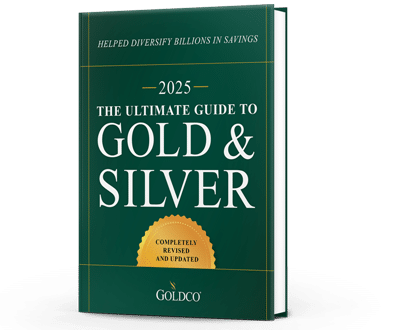
A rollover IRA is an individual retirement account (IRA) that is funded by moving funds from a 401(k), 403(b), TSP, or similar retirement account into an IRA. By rolling over existing retirement funds into a rollover IRA, individuals can use existing retirement funds to take advantage of a broader range of assets than are available through 401(k) assets alone.
Rollover IRAs are most often created when changing jobs or retiring, as they allow employees to move their current 401(k) or other retirement account balances into an IRA account that can offer a better array of assets and superior performance.
When performing an IRA rollover, funds from existing tax-advantaged accounts can be rolled over into a new IRA tax-free. You can even roll over funds from multiple retirement accounts into a single rollover IRA, making it easier for you to consolidate and manage your retirement savings.

Rollover IRA vs. Traditional IRA
Many people are familiar with Traditional IRAs. Anyone can set one up and contribute up to $7,000 a year ($8,000 for those over age 50) to a Traditional IRA account.
Those contributions come from pre-tax income and, in many cases, are also tax-deductible. That allows people to contribute to their retirement savings while gaining some nice tax benefits.
A Traditional IRA allows you to grow your retirement assets tax-free until you decide to or are required to take a distribution. By keeping taxes from eating away at asset returns over the course of a working career, people can make greater gains over the long term than they otherwise would have.
A rollover IRA, by contrast, is funded from existing 401(k), 403(b), TSP, or other similar retirement accounts. Individual can choose either partial or full rollovers, moving part or all of their existing retirement account savings into a rollover IRA.
Many will do that after they’ve changed jobs or retired, because employer-sponsored retirement plans often don’t perform well after employees have left. Because of the cost of sponsoring and managing retirement plans, many employer-sponsored retirement plans automatically place the funds of departed or retired employees into low-yield money market or cash funds.
If you’ve recently switched employers or retired and your money is still in your employer’s plan, you could be missing out on better options. That’s why many decide to use their retirement savings from previous employers to fund a rollover IRA.
By rolling over a 401(k) to an IRA, you can maintain the productive use of the retirement assets you’ve been building up for years while still allowing yourself to maximize your potential future gains.

Rollover IRA vs. Roth IRA
Most rollover IRAs are Traditional IRAs in that they are funded using pre-tax dollars that have been saved and assets in 401(k) and similar pre-tax retirement accounts. But these aren’t the only types of rollover IRAs.
Rollover IRAs can also be Roth accounts, either through rolling over a 401(k) to a Roth rollover IRA using a Roth conversion, or by rolling over funds from a Roth 401(k) to a Roth IRA.
In the first instance, a Roth conversion would trigger tax consequences, requiring payment of taxes and, if you’re under age 59½, potential penalties. In the second instance, a Roth 401(k) to Roth IRA rollover, no taxes are due.
Roth rollover IRAs offer the same asset options as Traditional rollover IRAs, it’s just that a Roth rollover IRA’s qualified distributions don’t require you to pay taxes. In the end, the decision about whether to make your rollover IRA a Roth or Traditional IRA comes down to when you want to pay taxes: at the time of rollover, or when you take a distribution.

Rollover IRA Rules
It’s important to remember that, just like with any retirement account, a rollover IRA is subject to various IRS guidelines and restrictions. Those include time limits on rolling over funds, regulations regarding making contributions to a rollover IRA, and of course tax issues.
Before you make the decision to start a rollover IRA, it’s always a good idea to consult with your tax adviser to make sure that you don’t unknowingly subject yourself to a preventable tax liability.
Types of IRA Rollovers
There are two types of IRA rollovers: direct and indirect. A direct rollover is the simplest and easiest type of rollover. Those can happen one of two ways.
1. In the first type of direct rollover, funds are transferred directly between custodians. For instance, you would direct your current 401(k) plan provider to transfer your funds from your 401(k) account to your new IRA.
The plan provider would take care of the transfer and you would see the funds show up in your new IRA account. The funds never touch your hands and you won’t owe any taxes.
2. In the second type of direct rollover, your 401(k) plan provider may make out a check to your new rollover IRA custodian and send it to you. You won’t owe taxes on that either, but then you’re required to send the check to your new IRA custodian.
That adds an unnecessary layer of complication. If the check gets lost in the mail, gets thrown out by accident, or gets eaten by your dog, you’re going to have some explaining to do.
An indirect rollover is a rollover in which you direct your 401(k) provider to make out a check to you. Once that check is made out to you, you have 60 days either to deposit it back into your 401(k) account or to deposit it into your rollover IRA account. That’s known as the 60-day rule.
If you fail to deposit that money within 60 days, not only will you owe taxes on that distribution, you will also be charged a 10% penalty if you’re under the age of 59½. In many cases your 401(k) plan will also deduct an automatic 20% for tax withholding.
That means that you’ll have to make up that 20% when depositing the money into your new IRA account. You’ll then receive the amount withheld refunded as a tax credit when you file your tax return. With all that difficulty, why would anyone choose an indirect rollover?
Most often, people choose indirect rollovers because they want to use part of the money for a short period of time. They intend to pay the money back, and in many cases they do.
But all too often something comes up and they can’t deposit the full amount. Suddenly, they find themselves liable for taxes and penalties that they could have and should have avoided.
That’s why direct rollovers between 401(k) providers and IRA custodians are normally the preferred method of performing 401(k) rollovers, as they normally occur between custodians and eliminate your need to get in the middle of the transaction.
Rollover IRA Contributions
Once you’ve established a rollover IRA, you can contribute to it just like with a traditional IRA. And as with a traditional IRA, you’re limited to $7,000 in contributions per year ($8,000 if you’re over 50).
But those contributions are across all IRAs, so if you have multiple IRA accounts, you are limited to that $7,000 total across all your accounts.
If you establish a rollover IRA and begin making contributions to it, you may also inhibit your ability to do a reverse rollover IRA. That’s when you roll over funds from an IRA back into a 401(k).
Not every 401(k) plan allows reverse rollovers, but for those that do, it can be a useful option for those who are still working at age 73 to roll over funds from an IRA into a 401(k) to lower their required minimum distributions (RMDs).
Once you contribute additional funds to a rollover IRA, you may no longer be able to roll those funds back over into a 401(k) account due to commingling. That’s something you’ll want to consider before deciding to contribute additional funds to your rollover IRA.
Rollover IRA Taxes
While your 401(k) to IRA rollover is normally tax-free, a Traditional rollover IRA is taxed at the time of distribution, as with any other Traditional IRA. At that point the distribution is taxed at your ordinary income tax rate.
Qualified distributions from a Roth rollover IRA are not taxed. Regardless of whether your rollover IRA is Traditional or Roth, if you elect to take a distribution before age 59½ you may incur a 10% tax penalty in addition to any income taxes you owe.
Once you reach age 73, you will be required to take RMDs from your IRA accounts every year. If you fail to take the minimum RMD in a given year you can be liable for a tax penalty of up to 50% of the amount of money that you failed to distribute.
As with any tax issue, be sure to consult with your tax adviser to make sure that you’re aware of the tax consequences of any financial decision you make.
When to Use an IRA Rollover
Many choose to start a rollover IRA when they have existing 401(k) accounts from previous employers. Because those accounts are often placed into low-yield funds, rolling them over into an IRA allows those funds to be put to better use.
Some may also choose to start a rollover IRA if their current employer-sponsored 401(k) plan doesn’t offer enough options. Not every employer-sponsored plan is necessarily a good one, and limited asset options and high fees can eat away at gains.
Not every employer-sponsored 401(k) plan allows in-service rollovers either. But if your plan allows you to move your funds to a rollover IRA, you can access a wider range of assets.
In some cases, the closer you are to age 73, the less likely you might be to do a 401(k) to IRA rollover. That’s because even though both 401(k) and IRA accounts are subject to RMDs, those still working at age 73 can defer RMDs from their current employer-sponsored 401(k) accounts until they retire.
While many people hope to retire before that time, those who are still working want to minimize their RMDs so that they minimize their tax obligations.

How to Start an IRA Rollover
If you’ve decided that an IRA rollover is right for you, you just need to follow a few easy steps to initiate the rollover. You’ll want to choose the type of IRA you want to set up, assess your risk appetite, figure out your future tax liability, and then choose the type of assets you want your IRA to hold.
1. Choosing the Best Type of IRA
There are numerous types of IRAs out there, each of which has its own advantages. Make sure you know what type of IRA you want to set up before you decide on your IRA rollover.
Types of IRAs
a. Traditional IRA
The Traditional IRA is the most familiar, and they make up a large percentage of 401(k) to IRA rollovers. You can set up a Traditional IRA at most brokerages, in many cases allowing you to hold in a wider array of stocks, bonds, and funds than through your 401(k) plan.
Contributions to a Traditional IRA are capped at $7,000 per year ($8,000 if you’re over age 50). In some cases these contributions can even be tax-deductible.
Gains on assets within a Traditional IRA accrue tax-free and are not taxed until distribution. When you take a distribution, you are taxed at current income tax levels.
b. Roth IRA
Unlike a Traditional IRA, a Roth IRA uses after-tax funds, but gains accrue tax-free and no taxes are paid when you take a distribution. Roth IRAs also don’t have to be distributed during the lifetime of the owner, so your funds can continue making gains for you after age 73 and well into retirement.
If you decide on a 401(k) to Roth IRA rollover, that’s known as a Roth IRA conversion. That means you would owe taxes when converting your funds into a Roth account. However, you wouldn’t owe any penalties even if you make that conversion before age 59½.
Unlike traditional IRAs, Roth IRA contributions are subject to income limits. If you make too much money, you’re not allowed to contribute to a Roth IRA ($146,000 for single tax filers and $230,000 for married filing jointly).
That doesn’t affect most individuals, but if you’re above those income levels you’ll need to take this into account before deciding on a Roth IRA conversion or starting a Roth IRA account.
c. Self-Directed IRA
A self-directed IRA is an IRA in which people themselves are fiduciaries and responsible for making their own asset selections. Self-directed IRAs can be either Traditional or Roth, and they allow individuals to hold a variety of alternative assets, including:
- Real estate
- Private equity
- Private bonds
- Tax lien certificates
- Commodities, including precious metals
Because self-directed IRAs allow a wider array of asset options, they’re generally used by those who are knowledgeable, experienced, and want a greater variety of choices than the normal standbys of stocks, bonds, CDs, and mutual funds.
d. Precious Metals IRA
A precious metals IRA is a type of self-directed IRA that allows individuals to hold precious metals such as gold, silver, platinum, and palladium. People can choose from a wide array of coins, bars, and other forms of bullion that meet IRS requirements for minimum fineness.
Precious metals IRAs require people to choose a custodian to manage their IRA assets, and a depository to safeguard their metals. When it comes time to take a distribution, individuals can choose to take a distribution either in cash or in precious metals.
That allows you the possibility to continue benefiting from the ownership of gold, silver, and other precious metals even after they are no longer held in a tax-advantaged account.
e. SEP IRA
A Simplified Employee Pension Individual Retirement Arrangement (SEP IRA) is a type of IRA created to allow self-employed business owners and their employees the ability to preserve wealth for retirement through an employer-sponsored IRA program. As with Traditional IRAs, SEP IRAs are taxed at ordinary income tax rates at the time of distribution.
Contributions to SEP IRAs are tax-deductible, thus benefiting employees’ tax liability. Contribution limits to a SEP IRA are in general higher than for Traditional IRAs but cannot exceed the lesser of 25% of income or $69,000. Funds from an existing 401(k) plan may be rolled over into a SEP IRA.
f. SIMPLE IRA
A Savings Incentive Match Plan for Employees Individual Retirement Account (SIMPLE IRA) is an employer-sponsored retirement plan for small companies (less than 100 employees) that is less expensive to administer than a 401(k) or similar retirement plan.
Contributions to a SIMPLE IRA cannot exceed $16,000 per year ($19,500 for those over age 50). Funds from an existing 401(k) plan may be rolled over into a SIMPLE IRA.

2. Choosing Assets for Your IRA
IRAs can offer a lot more flexibility than 401(k) accounts when it comes to the types of assets you hold. Particularly in the case of self-directed IRAs, the choices are nearly limitless.
If you feel limited by the choice of assets in your current 401(k), a 401(k) to IRA rollover may offer you greater options. But there are a few factors you’ll want to take into account before you make that rollover.
Choosing Assets Based on Taxes
The type of assets you acquire can make a great deal of difference in your ultimate tax liability. As with any decision you make with regard to taxes, make sure to consult your tax adviser before making any final decision.
a. Stocks
Purchasing stocks brings growth in value not just from the appreciation of stock prices, but also from any dividends paid by the company. Dividends often are taxed at a lower tax rate than ordinary income.
b. Bonds
While ordinary interest income is taxed at regular income tax rates, interest on certain types of bonds may be tax-exempt. For instance, interest from US Treasury securities is exempt from state income taxes, while state and municipal bonds are normally exempt from US federal income taxes. Making the right bond selection can grow your retirement assets while simultaneously minimizing your tax liability.
c. Precious Metals
Precious metals such as gold and silver that are owned outside an IRA account are subject to taxation at the collectible tax rate. For short-term gains, that means being taxed at ordinary income tax rates.
Long-term gains are also taxed at ordinary income tax rates, with a maximum rate of 28%. That’s significantly higher than the highest capital gains tax rates on other assets, which max out at 20%.
But by buying gold and silver through a gold IRA rollover or silver IRA rollover, you can maximize your after-tax returns through favorable tax treatment.
Choosing Assets Based on Risk
Purchasing in an IRA allows you a wider array of asset options, which can help you adjust the risk exposure of your portfolio. Some of the risks that you can hedge against include:
a. Concentration Risk
This is the classic “putting all your eggs in one basket.” Many 401(k) plans allow their participants to hold a handful of stock funds, but that’s about it.
That subjects 401(k) account holders to the risk of being overly concentrated in stocks. Rolling over 401(k) funds to an IRA can help mitigate that risk by offering a wider array of asset options.
b. Credit Risk
Credit risk is the risk that the entity issuing a bond will default on that bond. Many 401(k) plans don’t offer a whole lot of bond choices, which can leave individuals exposed to risky bonds. A 401(k) to IRA rollover can open up a lot more choices and help hold safer bonds.
c. Inflation Risk
Inflation risk is the risk that your assets won’t grow faster than the inflation rate. The higher the inflation rate, generally the higher the risk.
By doing a 401(k) to IRA rollover, you can choose assets whose growth can outpace inflation, or assets like gold and silver that can help protect your wealth against depreciation of the dollar through inflation.
d. Currency Risk
Purchasing in foreign stocks and bonds can bring an element of risk if they’re denominated in foreign currencies. Sudden swings in exchange rates can decimate the value of those assets.
But dollar-denominated assets can be a bad bet if the dollar continues to weaken in the future. Here too you can choose to buy gold and silver, which can gain in value as the dollar weakens.
e. Interest Rate Risk
Interest rate changes play a great role in financial markets. The more volatile they are, the more volatile bond prices become.
With so much uncertainty surrounding the future of interest rates today, bonds are becoming increasingly uncertain, as no one knows what the interest rate environment will be at the end of the year, let alone 5, 10, or 20 years from now.

Maximizing Your Retirement Savings
If you plan to retire comfortably, you’ll likely want to maximize your retirement savings. And leaving money in retirement accounts that aren’t performing won’t get you there.
That’s why 401(k) to IRA rollovers have become so popular with so many people and could be the right choice for you. Why leave money on the table and forgo potential gains when you could start a rollover IRA and put your money to work for you?
If you think a rollover IRA is the right choice for you, contact the experts at Goldco today. Their years of experience in helping people just like you roll over assets into precious metals IRAs can help you grow your wealth too.
Individuals who bought gold and silver during the last financial crisis saw their assets protected throughout the worst part of the crash, and they continued to gain wealth after the recovery began. With a recession seemingly on the horizon, shouldn’t your assets be protected?
Call Goldco today and learn more about how a 401(k) to IRA rollover can help safeguard your retirement dreams.
Rollover IRA FAQ:
What is a rollover IRA?
A rollover IRA is an individual retirement account (IRA) that is funded by moving funds from a 401(k), 403(b), TSP, or similar retirement account into an IRA.
What is the difference between a direct and indirect rollover?
A direct rollover is one in which funds are paid from one custodian or plan manager to another and are never deposited in the individual’s account. An indirect rollover is one in which funds are paid to an individual and are then subject to the 60-day rule.
Will I owe taxes on my rollover?
You will not owe any taxes on a direct rollover. You will owe taxes on an indirect rollover if you fail to deposit the full amount of your rollover into your new IRA account within 60 days.
What types of retirement plans can I roll over?
A 401(k), 403(b), TSP, or similar retirement account can be converted into a rollover IRA. You can even roll over an existing IRA account into a new rollover IRA.
You can also perform a Roth conversion and roll over those same retirement accounts into a Roth IRA. Or if you have a Roth 401(k) you can also roll that account over into a Roth IRA.
What type of IRA can I roll my money into?
You can roll your money into any IRA, including a traditional IRA, Roth IRA, precious metals IRA, SEP IRA, or SIMPLE IRA. If you roll your money into a Roth IRA then you would need to perform a Roth conversion and pay all appropriate taxes.
Assets in existing Roth accounts can only be rolled over into another Roth account, not into a pre-tax account. Please see the IRS Rollover Chart for more information.
Can I contribute to my rollover IRA once it is open?
Yes, you can make contributions to your rollover IRA, up to the maximum annual limit of $7,000 ($8,000 if you’re over age 50). But if you make contributions to your rollover IRA you may not be able to perform a reverse rollover and roll those IRA funds back into an employer-sponsored 401(k) or similar retirement plan.
This article was originally published in August 2019 and was updated in July 2024.












